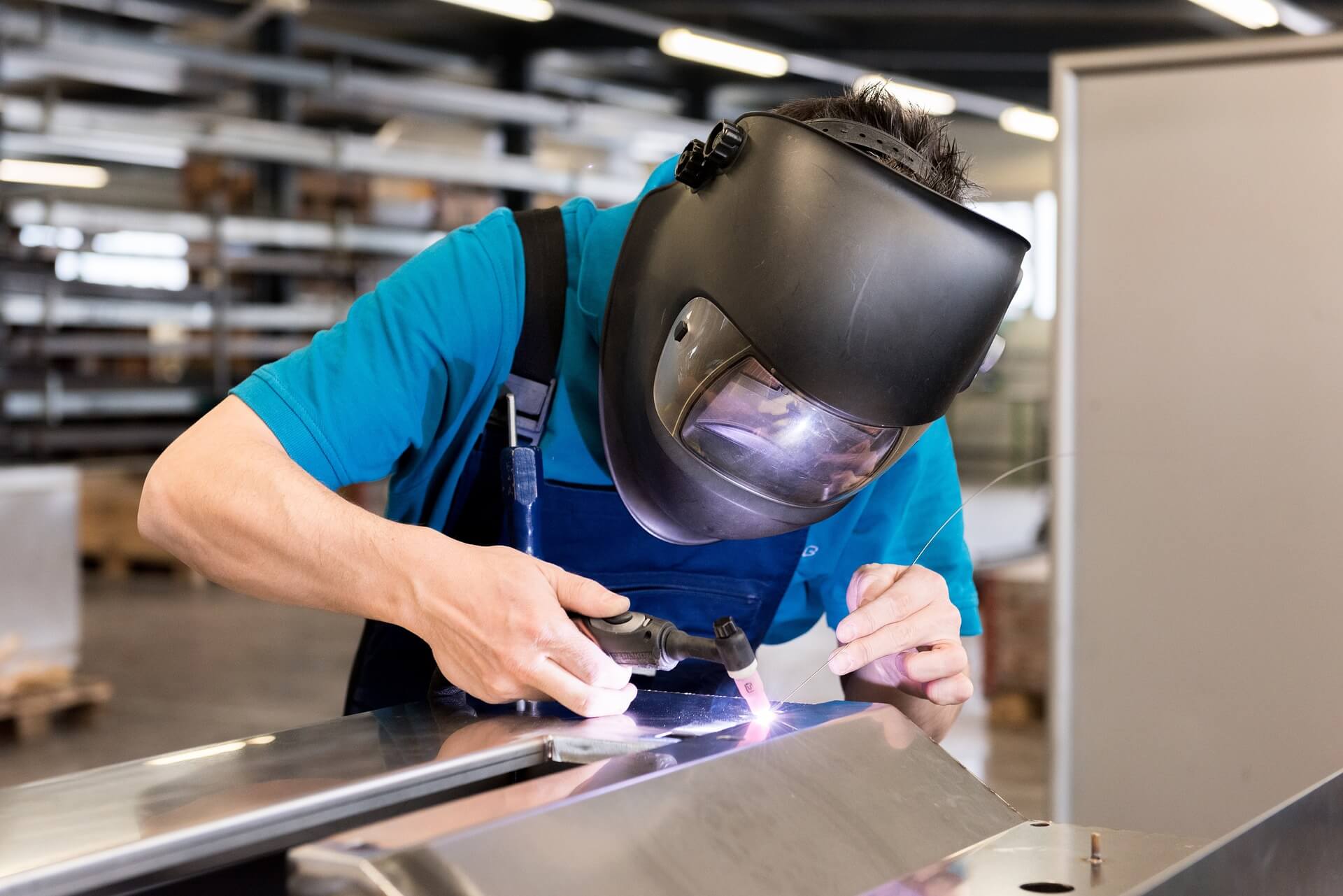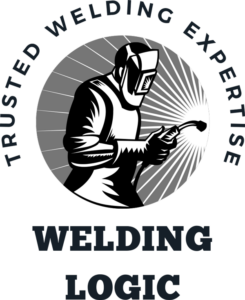Lap welds connect two pieces of metal when one partly lays upon the other or they meet at right angles. The weld offers you options for welding one side or both for additional strength.
The weld often is used on sheet metal and makes the weld even stronger when you lay it on both sides.
Lap welds can be difficult for those who do not perform them often. Experience, patience, and preparation make them much easier. The following will help to give you a better understanding o
In This Article
What Gives a Lap Weld Its Name
The lap weld’s name might make you think of a lap in a race, but that is not what the “lap” references. Instead, it is more like when waves lap up on the shore. Each wave laps up onto the shore before receding away.
When you lay a lap weld, you cause the molten metal to lap up onto the preceding weld and draw it back. Using a smooth and consistent rhythm can help you to produce even, level, and straight lap welds.
You also can make the weld easier to do by angling the heat in the direction in which the weld will travel.
For example, if you are laying the weld from right to left, you will start by angling the welding rod, wire, or torch to the left and drawing it back onto the weld you already have laid. Doing so helps to preheat the metal while enabling the weld to cool slightly while you are laying your lap welds.
Beware of Blowouts and Overpenetration With Lap Welds
One of the biggest issues with lap welds is the potential to blow a hole through the metal with heat. If you go too slowly or do not prepare the metal pieces prior to laying the weld, the heat could overwhelm the metal and cause a hole.
A blowout hole is very bad and could cause the pieces of metal to be discarded or repurposed for another use. Routinely causing blowouts very well might cause you to lose your job.
You also might cause overpenetration with the weld without creating a hole. Overpenetration is better than blowing a hole because you can fix it. You would need to remove excess metal on the bottom of the weld and could add more material on top to even it out.
How Metal Shape Might Affect the Weld
The shape of the metal that you are using is important. You want metal pieces that lie flat and that have an even edge.
Metal could have a mild curve or wavy pattern to it that creates high and low spots. When you place the other piece on it, you will have gaps that let light through and show you where the higher and lower sections are located.
A grinder can help to even out the edge and eliminate gaps that might cause a blowout or another weld imperfection. You also could use a heavy hammer to manipulate the pieces of metal and remove any gaps as the metal heats up and softens slightly.
Lap Weld Preparation
Preparation is critically important to make the lap weld work. You should make sure that the metal is flat and the edges are clean and level before starting your lap weld.
You do not need to create a groove or bevel to fill with the weld. Instead, you will apply the lap weld to the 90-degree angle created by the two pieces of metal.
You can use a metal press or a heavy hammer and either an anvil or a reinforced steel table to flatten metal that might have a slight curve or wavy feature due to how it was stored or possibly changes in hot and cold temperatures while in storage.
You also should grind the edges flat so that there are no high or low spots that might create gaps between the two pieces of metal. A flat edge also will help you to lay a straight weld.
You should clean the metal to remove any grease, oil, or other contaminants that might have collected on it. Preheating the metal with a torch will help to make it more pliable.
When preheating the metal, you should heat the flat piece of one more than the edge on the other piece. The edges of metal tend to heat up faster and melt sooner than the wider flat piece to which you are welding it.
How to Inspect Lap Welds
Lap wells should appear uniform and penetrate to the bottom of the piece that does not have the edge on it. The metal edge should be uniform and still intact after you lay the lap weld to it and the other piece of metal.
A lap weld will produce a pattern of small weld laps that should be relatively straight and not wander on the metal. You also want the weld’s depth to be uniform and equal to the depth and width indicated on any diagrams that you might use.
Any imperfections in the weld could weaken it and sap its strength. A careful inspection could reveal any bubbles that might occur or other imperfections that might require you to grind out that portion and relay the lap weld.
What Is a Lap Weld Symbol?
Lap weld and lap weld joints don’t have a dedicated symbol, but multiple symbols can apply to a lap weld, and it can be draw fairly easily.
The lap weld symbol is very easy to read and interpret. It will appear on a diagram that shows how the pieces of metal are situated.
An arrow will point to where the weld is to go with a triangle that is 90 degrees on one corner, 60 degrees on another, and 30 degrees on the final corner. If you have used drafting tools, it is the same shape as a drafting triangle.
The triangle appears on the same side of the directional arrow and line that the weld should go onto the metal pieces. If two sides are to be welded, the arrow could have a triangle on either side.
The symbol also could include the depth and width desired by showing two fractions, such as ¼ for depth and 3/8 for the intended width.
Lap Weld Pipe
Lap weld pipe is a type of pipe that is commonly used in the construction and piping industries. This pipe is made by welding two pieces of metal together at their edges, which creates a strong and durable joint. This type of pipe is often used to transport liquids and gases, as well as to connect two pieces of equipment or piping together. Lap weld pipe is available in a variety of sizes and can be customized to meet the needs of any project.
- There are many benefits to using lap weld pipe, including:
- Lap welds are strong and durable, making them ideal for use in high-pressure applications.
- Lap welds are easy to create, which makes them ideal for use in construction and piping projects.
- Lap welds can be customized to meet the needs of any project.
- Lap welds are available in a variety of sizes, making them ideal for use in a variety of applications.
Lap Weld Joint
Lap welds are strong and durable joints that are commonly used in the construction and piping industries. This type of joint is created by welding two pieces of metal together at their edges. This creates a strong connection that can withstand high levels of stress and pressure. Lap welds are available in a variety of sizes and can be customized to meet the needs of any project.
Frequently Asked Questions
Additional Sources & Resources
-“Lap Welding.” Triton College. https://www.triton.edu/faculty/fheitzman/lw_intro.html
-“Lap Joint Welding.” WcWelding. http://www.wcwelding.com/types-of-joints/lap-joint-welding/
-Baker, Frederick S., and Edward V. Lewis. “Theory of the Lap Weld.” The Journal of Applied Physics 18.5 (1947): 401-407. https://doi.org/10.1063/1.1722848
-Campbell, John M., and Lloyd E. Brownell. “Tensile Properties of Beam-Lap Welds.” Transactions of the American Institute of Electrical Engineers-Part II: Applications and Industry 65.1 (1946): 59-67. https://doi.org/10.1109/TAIECII.1946.4505386
-Eddy, Charles A., Norman Cottrell, and Richard Jex. “Effect of welding current on penetration in thin sheets during lap welding.” Welding journal (Miami, Fla.) 36.2 (1957): 85-91.
-Flanagan, Robert H., and Carl H. Lindberg. “A Study of Some Factors Influencing the Strength of Lap Joints.”

